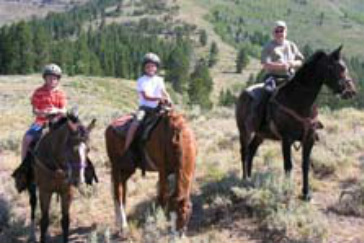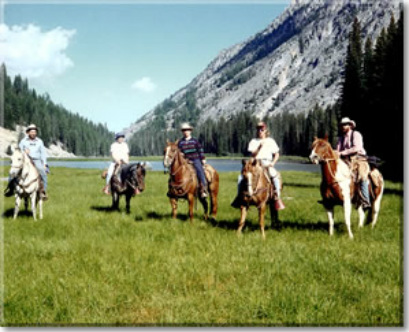|
|
Trail Riding Safety
By following a few safety and etiquette rules, trail riding can be a safe and fun way to see our beautiful country. Stay Alert - It's easy when you're plodding along, chatting to your riding buddies on a beautiful day on the trail to forget you're supposed to be actively" riding" your horse. You may become a bit of a back seat passenger. This can be very dangerous as your reaction time will be delayed by critical seconds. Stay alert and attentive at all times while riding. Not tense - but constantly aware of the environment - your riding surface, your peripheral vision, your distance in relationship to other riders, your horses responses to your cues-much as you would (or should be) while driving. 1. Elect someone who knows the trails as trail boss. 2. Wait until all riders are mounted to move off. 3. Do not pass the trail boss. 4. Don't take off galloping, leaving other riders with bolting/bucking horses. 5. The trail boss maintains the pace and is considerate of others when increasing speed. 6. Fast speeds on the trail are unsafe. Ride at safe gaits. 7. Keep the pace down when returning to camp. 8. Only go as fast and as far as the most inexperienced rider and/or horse in the group can handle. 9. Ride single file unless the trail is wide enough to ride at least one horse length distance from the horse next to you. 10. If you must pass other horses, inform the rider you are passing, keep at least one horse length distance from all horses you are passing and do not do so at an extremely fast pace. 11. Keep at least one horse length between you and the horse in front of you whether you know the other horse well or not. If you can't see the back feet of the horse in front of you, you are tailgating, BACK OFF. 12. Horses prone to kicking should wear a red ribbon on their tails. 13. Do not leave the trail. Holes and unsafe surfaces, sharp objects, wire, brush, limbs, snakes and hornets nests may exist in unknown areas such as open fields. 14. Watch where you ride-avoid dangerous ground. 15. Use extreme caution at wet spots or boggy places. 16. Ride as well-mannered a horse as possible and let everyone know your horse's "quirks". 17. Do not play practical jokes and indulge in horseplay. 18. Use courtesy to everyone on the trail - other riders, hikers, bikers, motorcyclists, and motor vehicle operators. 19. Warn the rider behind you if you encounter low limbs, rocks, logs, holes, wire or any other obstacle on or near the trail that could be hazardous. 20. If a rider or riders must stop for any reason, the trail boss must be informed so the rest of the group may stop as well. 21. If a rider or riders must leave the group for any reason, the trail boss must be informed so the rest of the group may stop if needed and prepare their horses for the separation. 22. Individual riders must not leave the group alone. The trail boss must send a designated rider along with them. 23. When someone dismounts to open or close a gate, everyone go through the gate, move to a safe distance and WAIT for the gate person to mount. 24. When stopping for the horses to drink, everyone should move to a safe distance when their horse has finished drinking and WAIT for all of the horses to finish drinking before moving out. 25. When negotiating an obstacle such as a log, rock, water crossing, steep hill, etc., as the first riders clear the obstacle they should stop a safe distance away OR move out VERY slowly until the last rider has cleared to avoid the last horses from "rushing" through the obstacle. 26. The trail boss should confront any rider that is violating any of the trail safety rules and may find it necessary to ask them to leave the group in extreme cases. 27. Any rider preferring not to comply with the trail safety rules should ride separately - out of sight and hearing - from the group. 28. Every rider is equally responsible for every other rider and horse in the group. |


